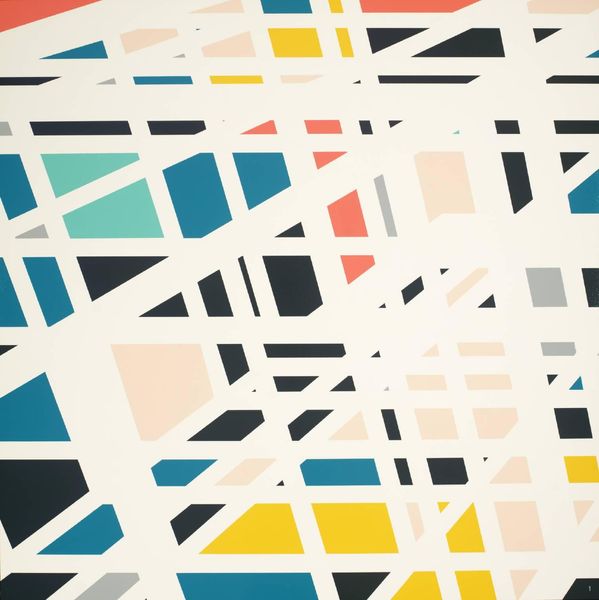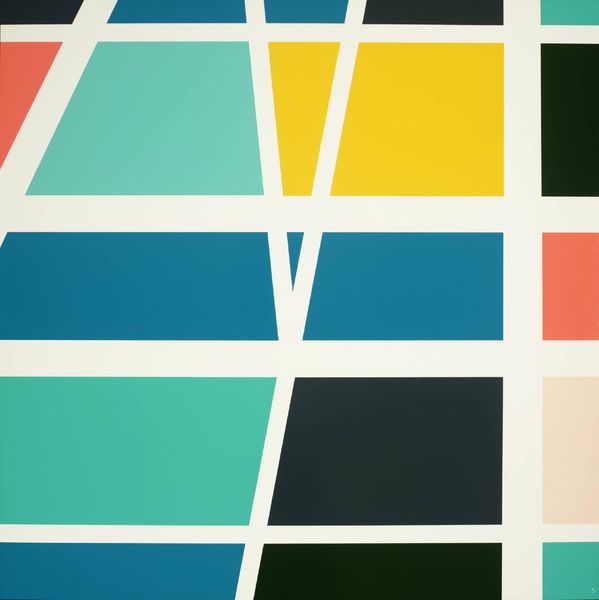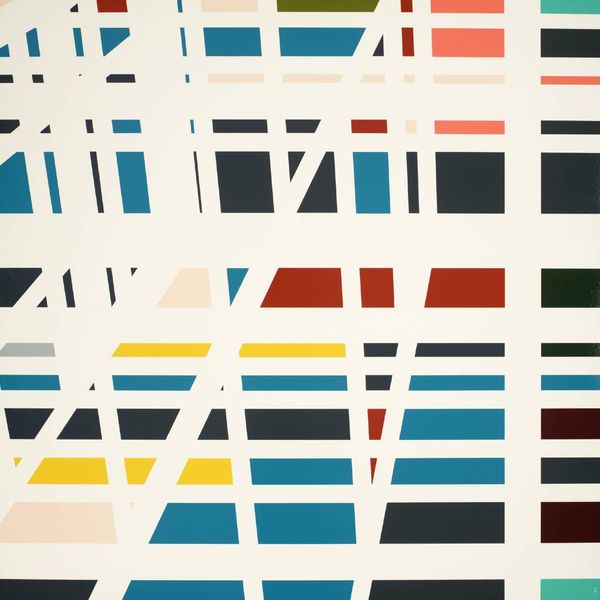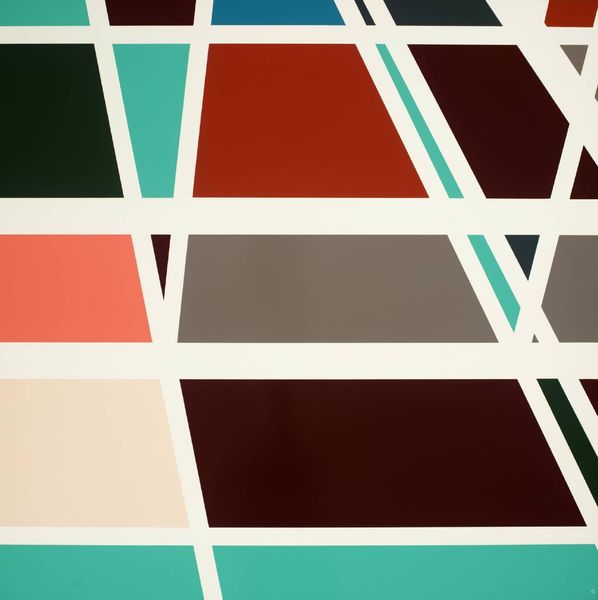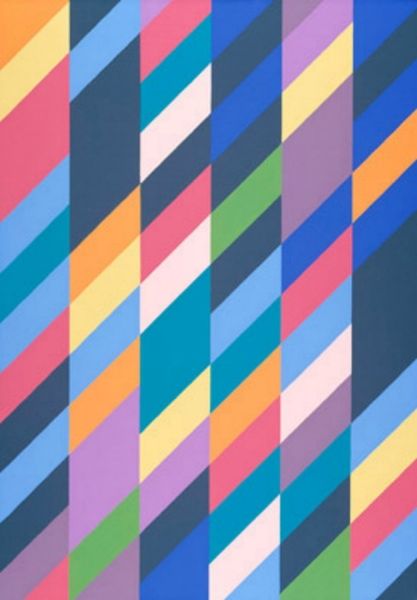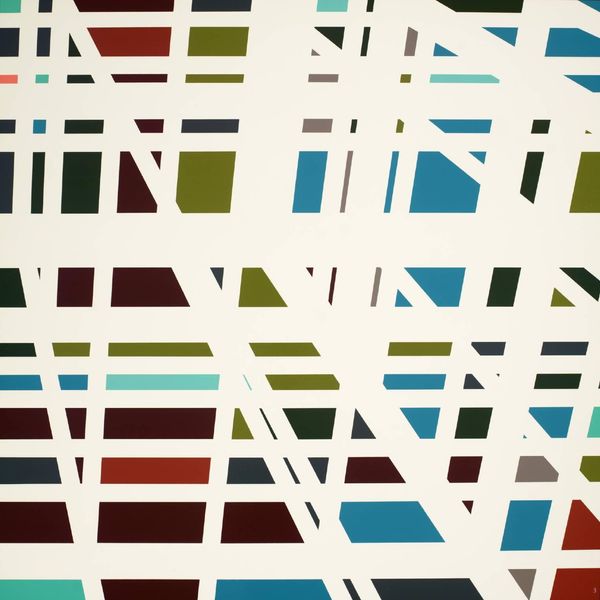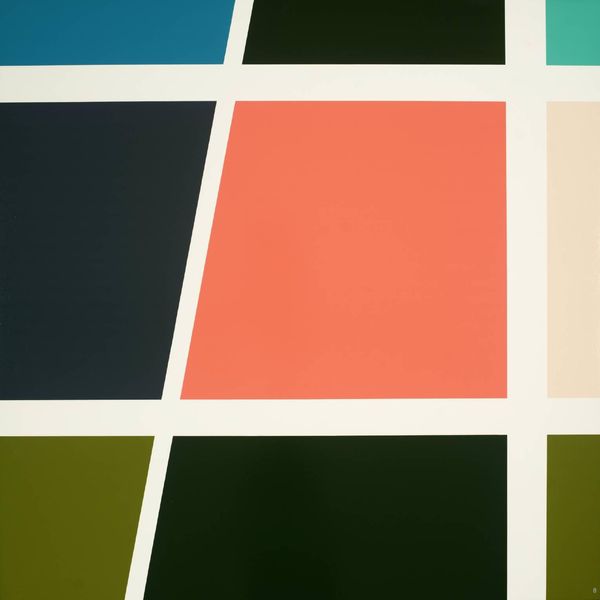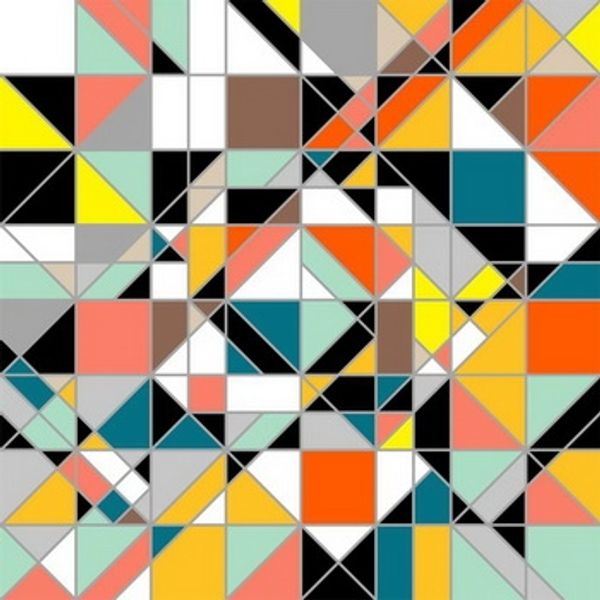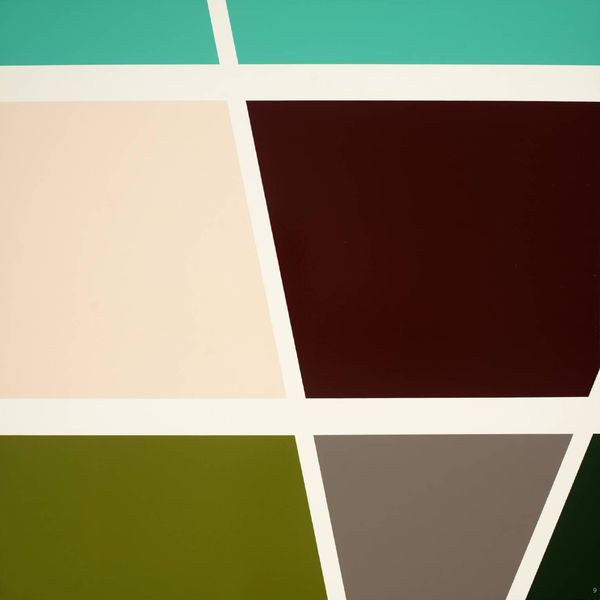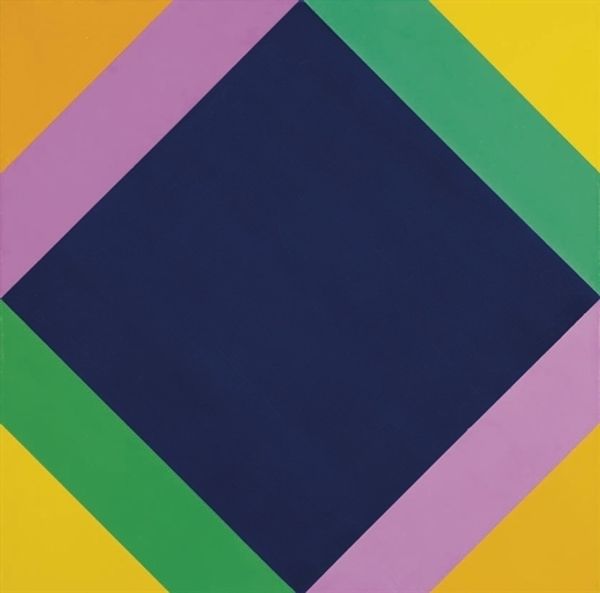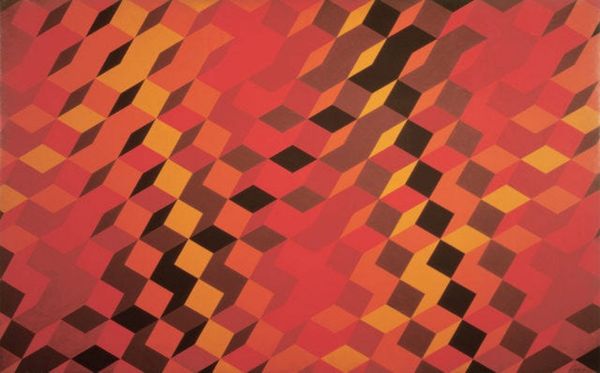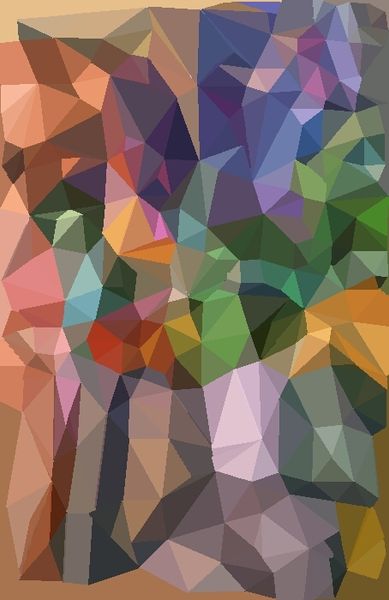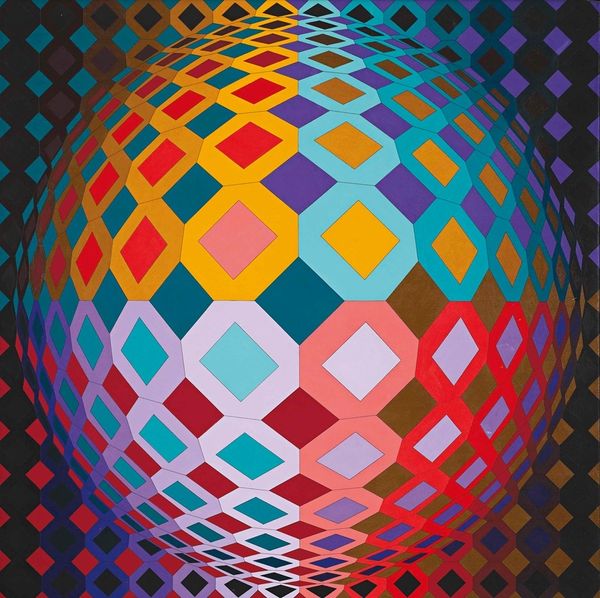![Dulles [Capital] by Sarah Morris](/_next/image?url=https%3A%2F%2Fd2w8kbdekdi1gv.cloudfront.net%2FeyJidWNrZXQiOiAiYXJ0ZXJhLWltYWdlcy1idWNrZXQiLCAia2V5IjogImFydHdvcmtzLzU5YzZkOWZjLTBjOGYtNDcwYS04NzJhLWEzYWNkYjlhY2QzMC81OWM2ZDlmYy0wYzhmLTQ3MGEtODcyYS1hM2FjZGI5YWNkMzBfZnVsbC5qcGciLCAiZWRpdHMiOiB7InJlc2l6ZSI6IHsid2lkdGgiOiAxOTIwLCAiaGVpZ2h0IjogMTkyMCwgImZpdCI6ICJpbnNpZGUifX19&w=3840&q=75)
Dimensions: image: 737 x 737 mm
Copyright: © Sarah Morris | CC-BY-NC-ND 4.0 DEED, Photo: Tate
Curator: Sarah Morris's "Dulles [Capital]" presents such a striking composition. My first thought? It feels like an airport seen through a kaleidoscope. Editor: An airport! Yes, there's something about the geometric shapes, the hard edges, and the repetition that does suggest movement and transit, even if abstractly. Curator: Absolutely. These interconnected shapes, especially the triangles, do carry a symbolic weight, creating a sense of direction, or perhaps disorientation, considering the title. Editor: Perhaps it reflects the sterile anxiety of modern travel? I wonder if it's tapping into a deeper cultural unease about surveillance and control within these transit hubs. Curator: Hmm, surveillance... I like that angle. The palette feels very corporate, very mid-century modern. I wonder if it echoes a certain optimism mixed with underlying tension. Editor: Interesting, because ultimately, these are symbols stripped bare, forms that hint at deeper structures. It leaves so much open to interpretation. Curator: Yes. It's a curious balance of order and fragmentation, making the mind feel like it's either coming or going.
Comments
Join the conversation
Join millions of artists and users on Artera today and experience the ultimate creative platform.
tate 8 months ago
⋮
Dulles (Capital) is Morris’s first major print work. The portfolio comprises nine square prints containing abstract geometric grids. Blocks of bright greens, turquoise, yellow, browns, orange and greys are separated by white lines which appear recede into the distance at an extreme perspective. All nine prints may be displayed together, each print separated by 3.5cm of white wall, which becomes part of the work. They form a large square, depicting another, larger grid that echoes the structures within the individual prints. Displayed in this way they provide an off-centre variation of Morris’s painting Constitution Gardens 2000, (private collection). Each print is numbered in the lower right corner to designate its position within the overall grid. The bottom row (Tate P78602-P78604) is made up of large blocks of colour which become more broken up in the middle row (Tate P78599-P78601). By the top row (Tate P78596-P78598) the dense three-dimensional structure has become an intricate array of fragmented blocks and splinters of colour. Alternatively, the prints may be displayed individually or in smaller groups based on their positions within the full scheme.
